Holme Fen Spitfire dig: Propeller found after dig resumes
- Published
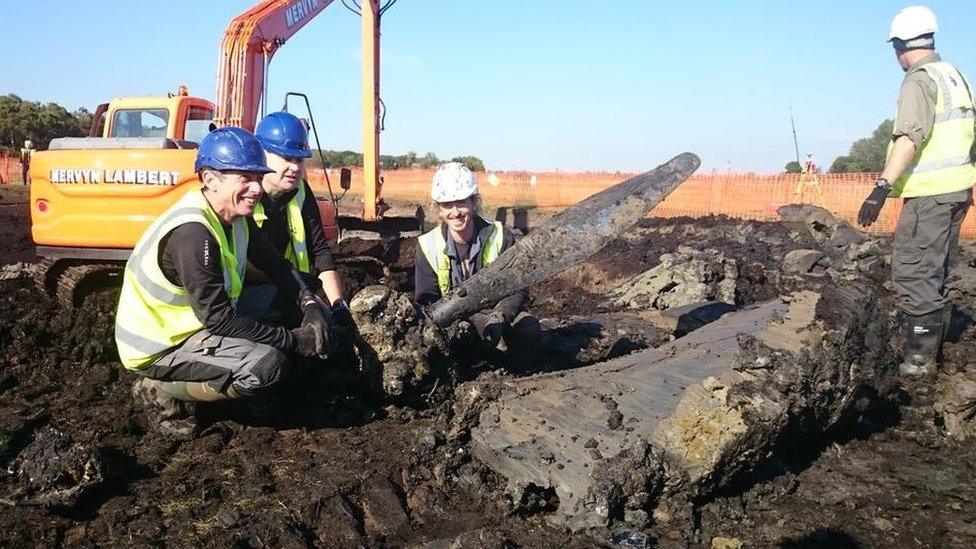
The Mk 1A Spitfire X4583's propeller has been retrieved
A Spitfire propeller has been unearthed by archaeologists who have been granted permission to continue a dig, despite the discovery of a bone fragment.
A cigarette case and parts of bodywork have also been found during the dig for the plane at Holme Fen, Cambridgeshire.
Permission to resume the excavation was granted by the coroner.
The bone is believed to be from the pilot, whose body was recovered from the aeroplane shortly after its crash during a training exercise in 1940.

The cigarette case could belong to Pilot Officer Harold Penketh, who died in the crash
Oxford Archaeology East said the dig had stopped because "a fragment of human skeletal remains" was found.
The group was notified by the coroner at 18:00 BST on Thursday that it had permission to continue with the excavation, a spokeswoman said.
"There was a likelihood of some human remains being present, albeit fragmentary - a common occurrence in high-speed crashes.
"This was a reason for having a full professional archaeological excavation, so that things could be done thoroughly, with protocol and with respect," the spokeswoman said.
The Spitfire crashed, nose first, at 300mph (483km/h) during the World War Two training mission.
The cause of the crash of the Rhodesian Squadron Royal Air Force, external plane was never fully established, although an investigation concluded either Pilot Officer Harold Penketh's oxygen system failed or there was a physical failure of the plane.
So far archaeologists have dug two metres down and found the original excavation site for the recovery of the pilot's body by RAF Wittering, which took seven days at the time.
They have also recovered the starter motor, control panels from the cockpit, part of the oxygen system and the entire remains of one of the fuel tanks of the Mk 1A Spitfire X4583.
They also hope to recover the engine.
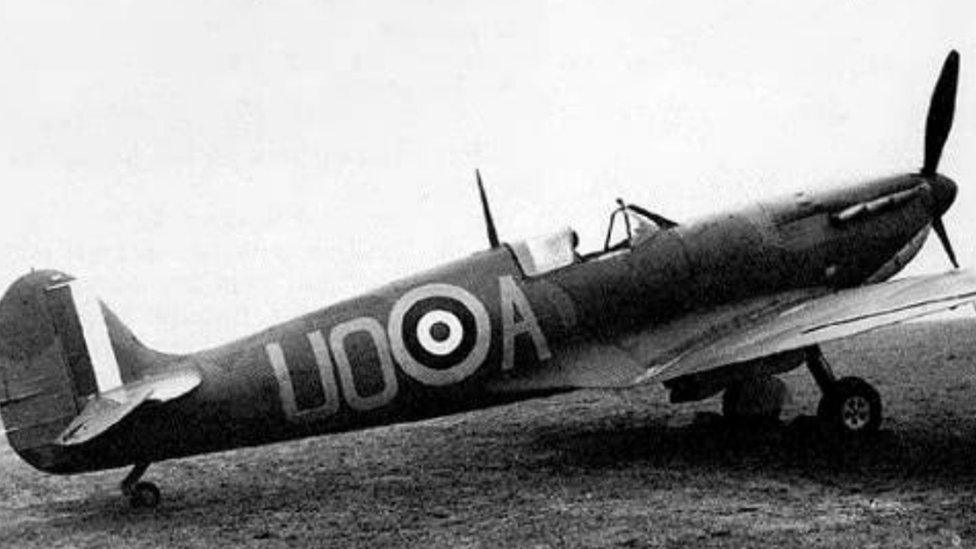
Pilot Officer Penketh's Mk 1A Spitfire crashed during a training mission in 1940
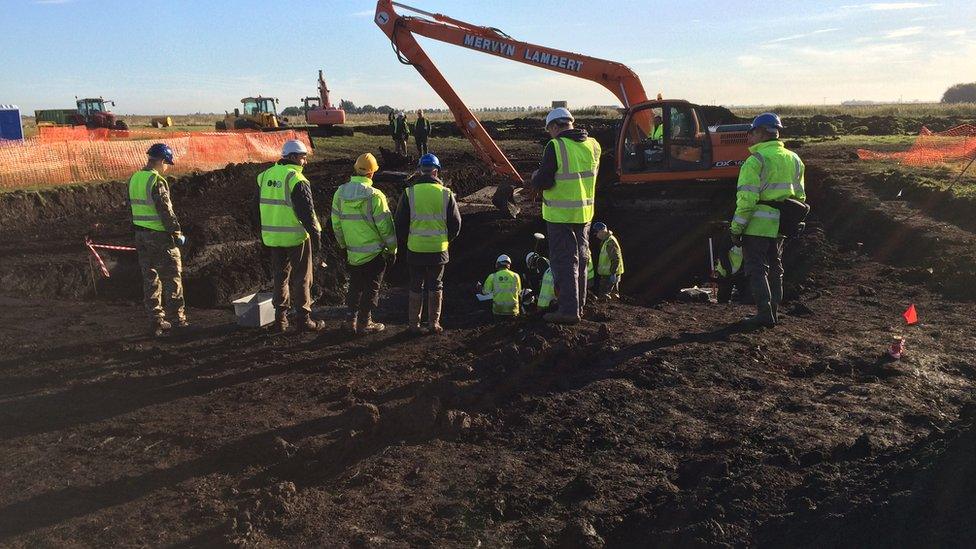
The dig started on Monday and saw several items recovered before the bones emerged
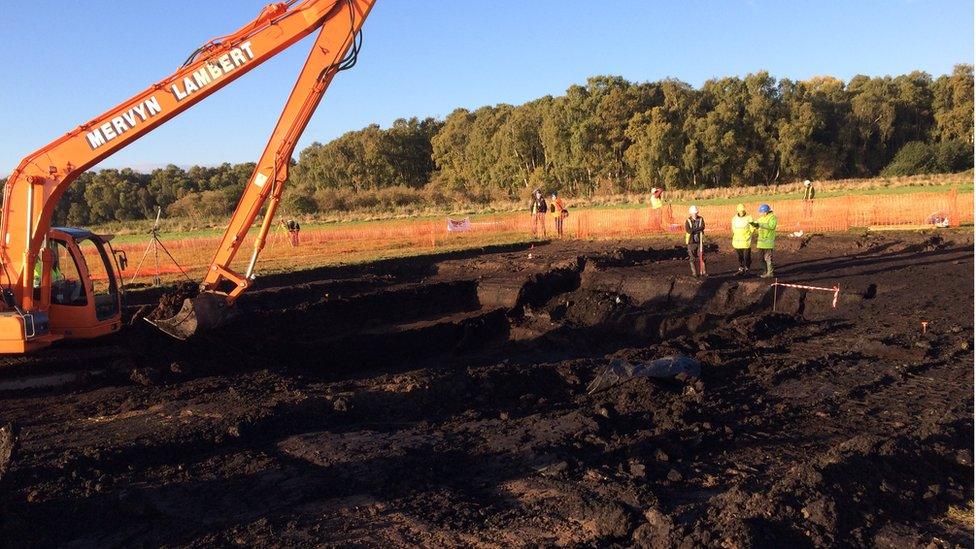
Archaeologist Stephen Macaulay said the dig had been a highlight of his 30-year career
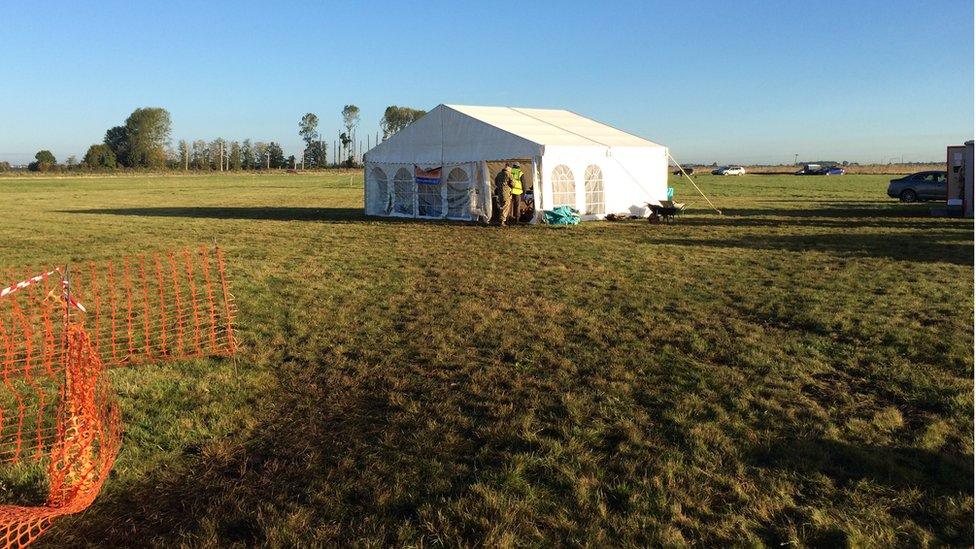
Artefacts are being collated, logged, photographed and cleaned nearby the site
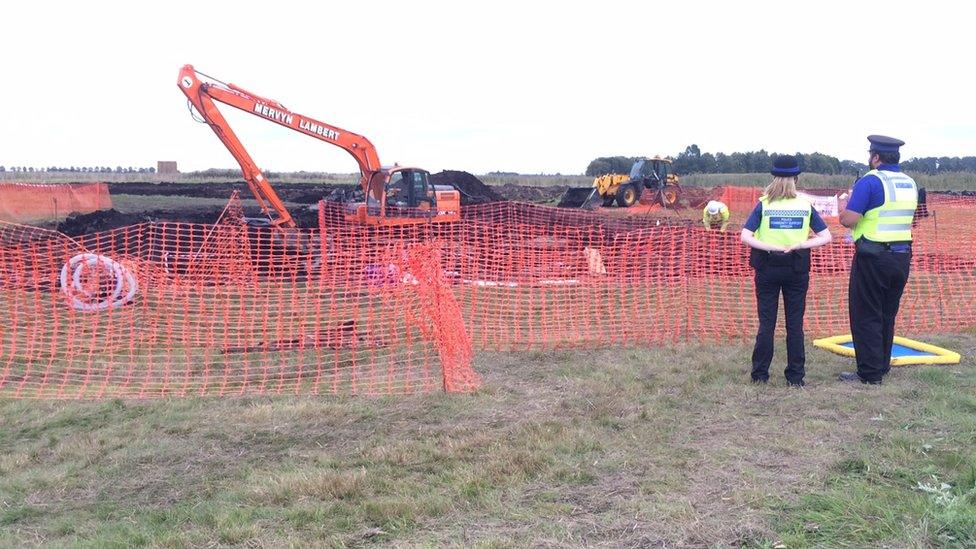
The dig had to be suspended and the coroner informed after the "fragmentary" human remains were discovered
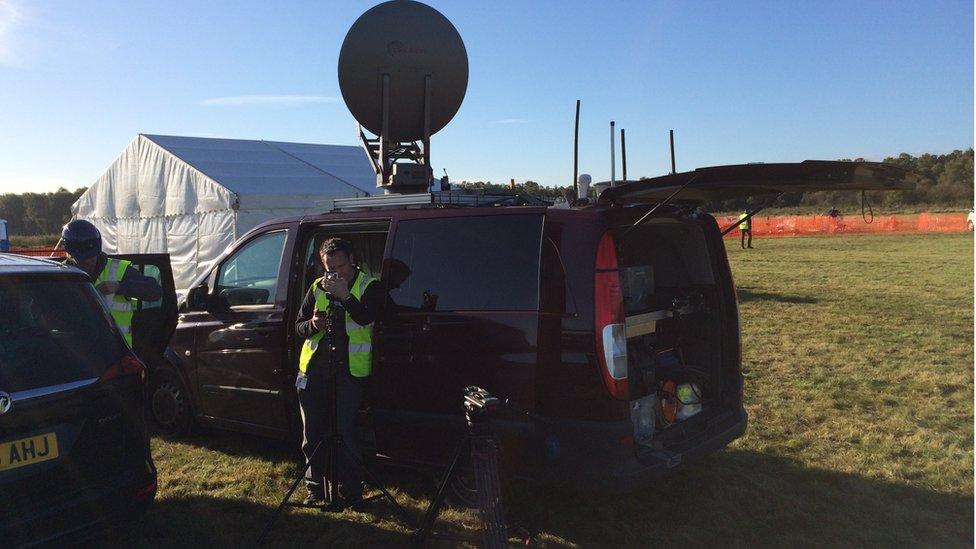
Media have descended on the farmland site at the village of Holme, south of Peterborough
- Published8 October 2015

- Published7 October 2015

- Published5 October 2015
